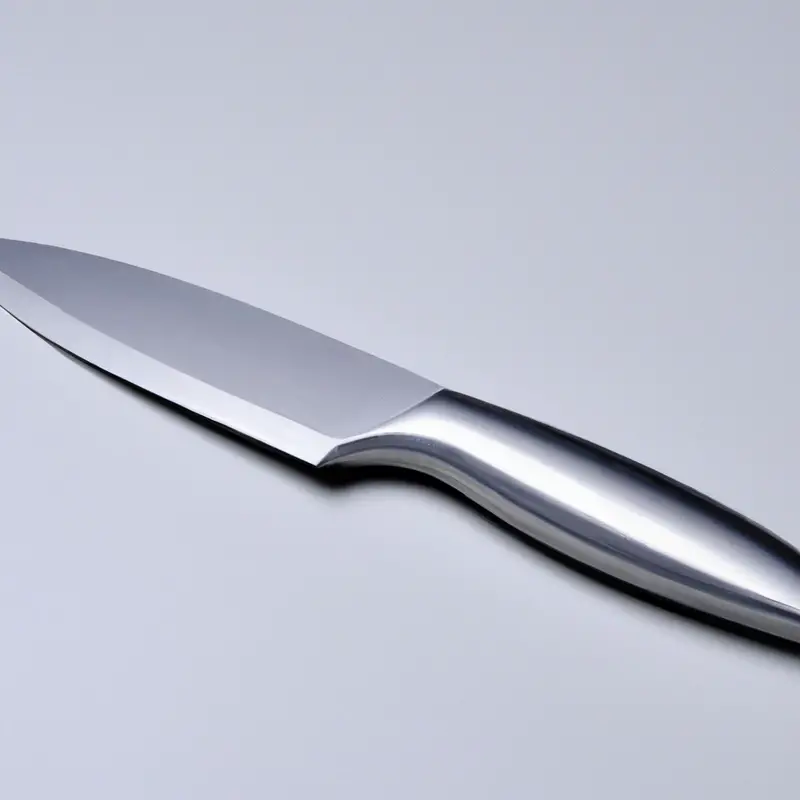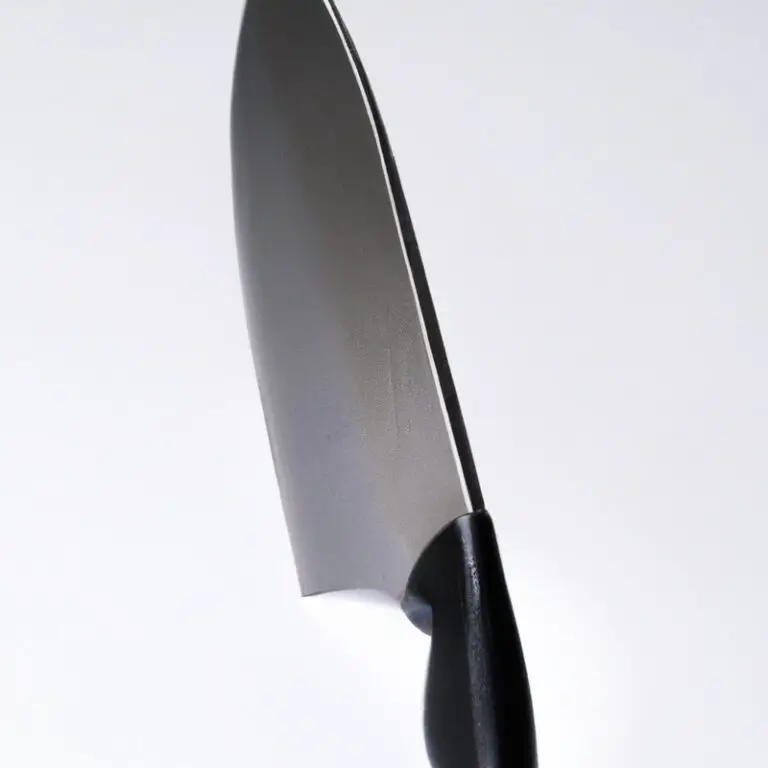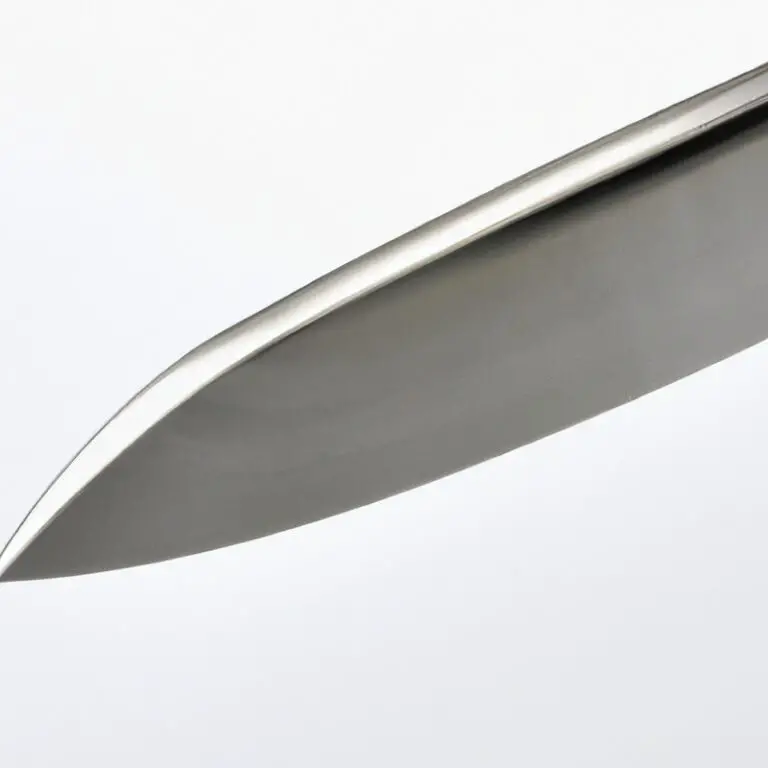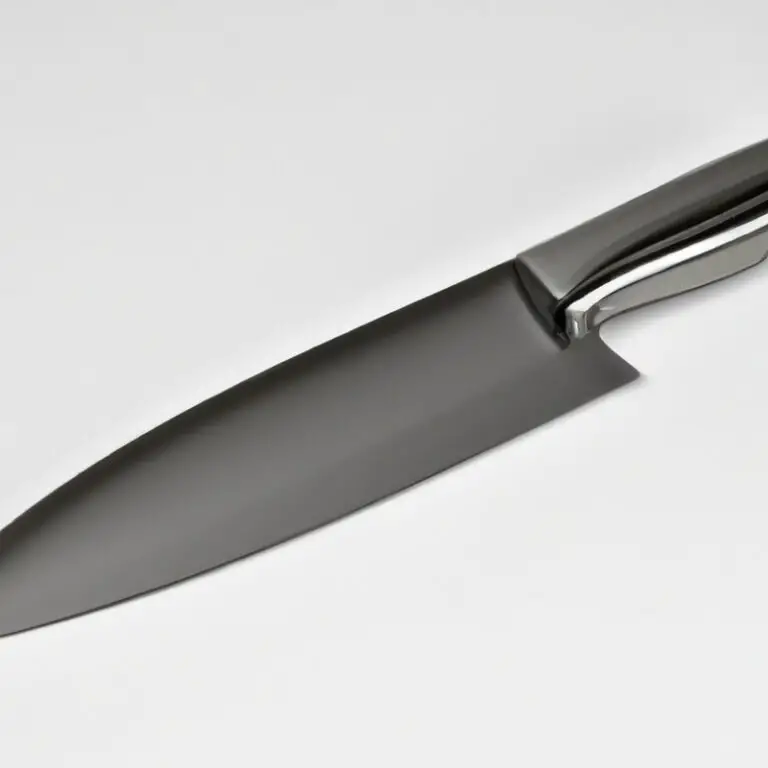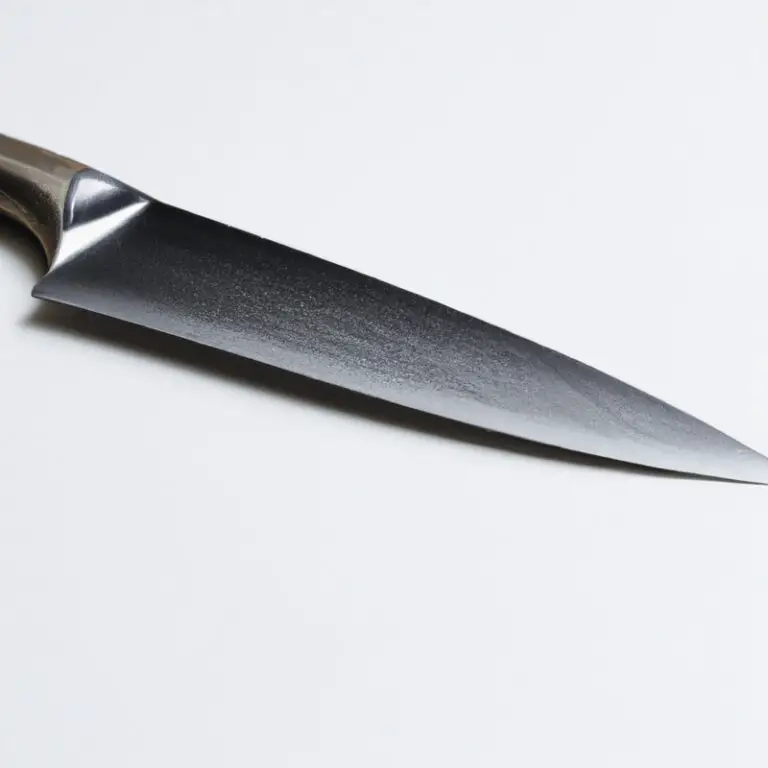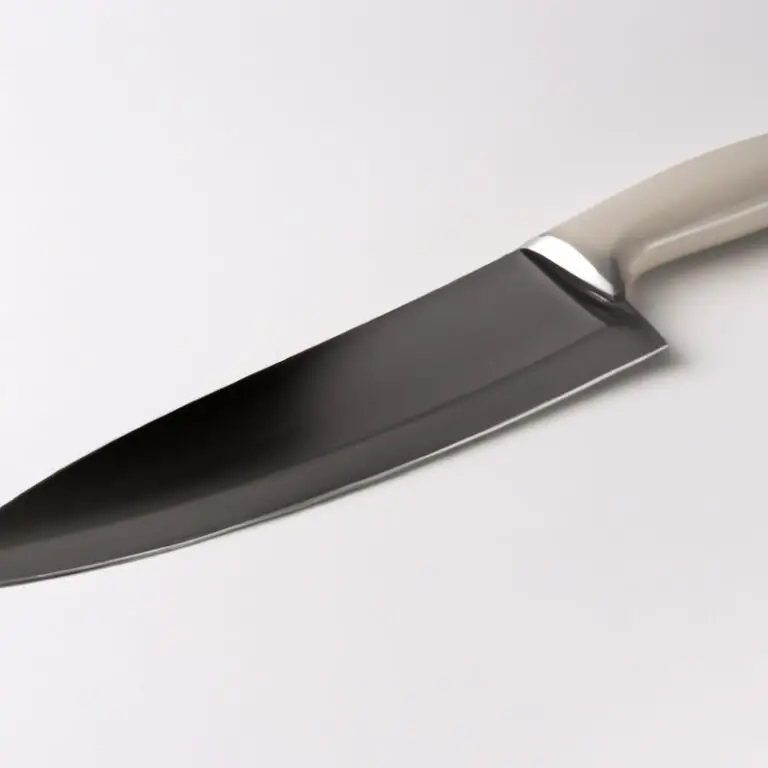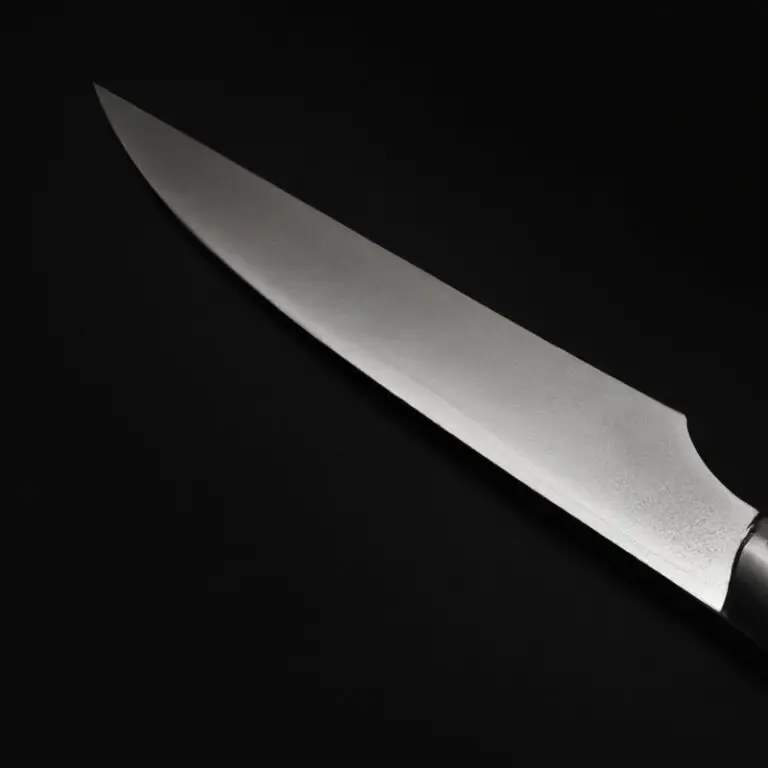What Are The Benefits Of Using a Santoku Knife? Slice With Ease
Key Takeaways:
- Santoku knives are versatile and efficient, making them ideal for various cutting techniques in the kitchen.
- The unique design and sharpness of a Santoku knife allow for precise and effortless slicing, resulting in cleaner cuts and presentation.
- Investing in a high-quality Santoku knife can increase the safety, comfort, and enjoyment of your cooking experience.
- Compared to other types of knives, the broad blade of a Santoku knife provides more surface area, allowing for faster food preparation and reduced fatigue.
If you’re serious about cooking, a Santoku knife is a must-have in your kitchen arsenal. With its sharp and versatile blade, Santoku knives are perfect for all kinds of kitchen tasks, from chopping and slicing vegetables to mincing meats and more.
Plus, their ergonomic design provides excellent balance and control, leading to improved precision and speed while cooking.
In this article, we’ll explore the many benefits of using a Santoku knife, including how they differ from other knife styles, their unique advantages, and expert tips for choosing the right one for your needs. Let’s get started!
| Benefit | Description |
| 1. Versatility | A Santoku knife can handle a wide variety of cutting tasks, from chopping vegetables to slicing meat and fish. |
| 2. Comfort | The ergonomic design of a Santoku knife allows for comfortable use, especially for those with smaller hands. |
| 3. Efficiency | The wider blade of a Santoku knife allows for quicker and more efficient chopping and slicing. |
| 4. Precision | The sharp, thin blade of a Santoku knife is ideal for making precise cuts and achieving perfect slices. |
| 5. Style | The unique, stylish shape of a Santoku knife adds elegance and aesthetic appeal to any kitchen. |
Understanding Santoku Knives: A Guide to Their Benefits and Uses
Santoku knives are versatile tools that can be used for various kitchen tasks, from slicing and dicing to mincing and chopping. These knives feature a unique design that includes a shorter blade and a flatter edge compared to other knives, allowing for more precise cuts and facilitating easier rocking motions.
They also have a comfortable handle that provides a secure grip and better control, reducing fatigue and strain on your hand and wrist during use.
Santoku knives are particularly useful for cutting vegetables, meat, fish, and fruits, making them an ideal choice for home cooks and professional chefs alike. Their efficient and ergonomic design allows for faster and more accurate cutting, saving time and energy in the kitchen.
They can also replace other tools, such as cleavers and chef knives, thanks to their versatility and multi-functional capabilities.
Choosing the right Santoku knife can make a significant difference in your cooking experience, so it’s important to consider factors such as blade construction, weight, balance, and durability. Maintaining your Santoku knife’s sharpness and cleanliness is also essential, as it can affect both its performance and longevity.
Overall, investing in a quality Santoku knife can elevate your cooking skills and creativity, providing you with a reliable and comfortable tool that you’ll enjoy using for years to come.
The Advantages of a Santoku Knife for General Kitchen Tasks
Santoku knives offer many advantages for general kitchen tasks. These knives’ design makes them ideal for chopping, slicing, and dicing, making them a versatile addition to any kitchen.
One crucial advantage of a Santoku knife is its superior design and efficiency.
The shape of the blade allows for a more natural, up-and-down chopping motion, reducing fatigue and improving the speed of cutting. Santoku knives also provide perfect balance, allowing for comfort and control while cutting.
This balance makes them easier to handle than traditional chef’s knives, especially when working with small or delicate items.
The versatility of Santoku knives also sets them apart. They can replace other kitchen tools, such as vegetable peelers and slicers, cutting down on clutter and making meal preparation more efficient.
Investing in a high-quality Santoku knife can also save time and energy in the kitchen.
A sharp, durable blade will cut through ingredients effortlessly, reducing the amount of force required and preventing injuries. Overall, a Santoku knife is a must-have for any serious home cook.
Its versatile design and efficiency make meal preparation easier, faster, and more enjoyable.
The Superior Design and Efficiency of Santoku Knives for Chopping and Slicing
Santoku knives are superior in their design and efficiency for chopping and slicing. Their blade is a bit shorter and wider than traditional Western knives, with a flatter edge and well-balanced weight, making them ideal for precise cuts.
The flat edge makes for consistent and even cuts, while the thinner blade reduces resistance and drag during slicing.
The shorter length compared to Western knives allows for greater control and ease of use. The Granton edge on some Santoku knives also helps to prevent food from sticking to the blade.
Overall, the design and efficiency of the Santoku knife make them an excellent choice for any home cook or professional chef.
Perfect Balance: How Santoku Knives Provide Comfort and Control
Santoku knives are designed with perfect balance in mind, providing comfort and control to users. The weight of the blade is evenly distributed, allowing for effortless movement, reducing wrist, arm strain, and fatigue.
The ergonomic handle allows for a comfortable grip, reducing hand fatigue and improving control while chopping or slicing.
The balance and control offered by Santoku knives make them an excellent choice for novice and professional cooks alike.
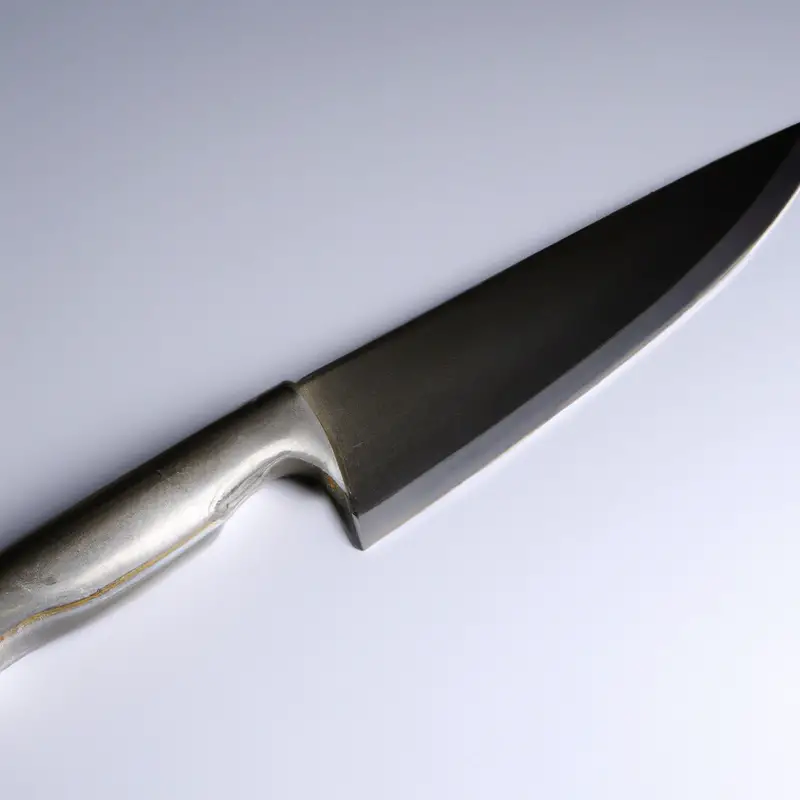
The Best Types of Foods to Cut with Your Santoku Knife
When it comes to using a Santoku knife, it’s important to know which foods are best suited for this type of knife. Santoku knives excel at cutting and preparing vegetables, fruits, meats, and fish.
The wide, curved blade allows for efficient slicing, dicing, and chopping, while the sharp edge makes it easy to cut through tougher foods like pumpkins or squash.
So, whether you’re preparing stir-fries, sushi, or a hearty stew, a Santoku knife is a versatile and efficient tool that can make meal prep a breeze.
Why a Santoku Knife is a Must-Have for Any Serious Home Cook
A Santoku knife is a must-have for any serious home cook because it offers many benefits. Unlike Western-style knives, the Santoku knife has a shorter blade and a sharp, angled edge that allows for precision slicing and dicing of vegetables, fruits, and meats.
The sharp blade of the Santoku knife also means that it cuts through ingredients with ease, reducing the risk of injury.
Additionally, the unique design of the Santoku knife allows for perfect balance and optimal control, ensuring that the knife feels comfortable and natural in the hand. In summary, a Santoku knife is a versatile kitchen tool that can efficiently replace other knives, saving time and energy in the kitchen.
It is an investment in long-term use and improves the confidence and skills of any home cook.
How a Quality Santoku Knife Can Save You Time and Energy in the Kitchen
A quality Santoku knife can save you time and energy in the kitchen in multiple ways. Firstly, the sharp blade easily slices through food items, reducing the effort required to chop, dice and slice.
With less force required, you can exert less pressure on your wrist and avoid fatigue and discomfort.
Secondly, the design of the Santoku knife allows for fast and efficient chopping motion, minimizing the time taken to prep ingredients. Moreover, the versatility of the knife eliminates the need for multiple tools in the kitchen, saving both time and storage space.
Finally, investing in a high-quality Santoku knife means it will last longer, reducing the need for constant sharpening or replacement, saving you both time and money in the long run.
The Versatility of Santoku Knives and Their Ability to Replace Other Kitchen Tools
Santoku knives are versatile and can replace multiple kitchen tools. The knife’s flat edge can scoop ingredients off a cutting board, while the sharp tip can handle intricate cuts and detail work.
The wide blade makes it perfect for slicing through vegetables, fruits, and boneless meats.
You can use a Santoku knife to chop herbs, mince garlic, and even cut through hard cheese. With a Santoku knife, you can complete most kitchen tasks without switching to different knives.
Its versatility can save you time and money while also reducing clutter in your kitchen.
Investing in a high-quality Santoku knife is a smart move for anyone looking to streamline their cooking process.
The Value of Investing in a High-Quality Santoku Knife for Long-Term Use
Investing in a high-quality Santoku knife is a wise decision for long-term use in the kitchen. A good Santoku knife guarantees better performance with a sharp and durable blade that can withstand high-intensity chopping, slicing, and dicing tasks.
It can also provide excellent comfort and control with its ergonomic design.
Investing in a Santoku knife also means versatility, as it can replace other kitchen tools due to its efficiency. A high-quality Santoku knife is an investment that can save you time and energy in the kitchen, while also boosting your overall confidence and skill.
A Beginner’s Guide to Choosing the Right Santoku Knife for Your Needs
When choosing a Santoku knife, there are a few key factors to consider. Firstly, decide on the blade length that will work best for your needs – typically either 5 or 7 inches.
Next, look at the blade material – high-quality stainless steel or high carbon steel are popular options.
Consider the handle material and grip, as well as the weight and balance of the knife. Look for a Santoku knife with a comfortable handle and good balance, as this will make it easier to use for extended periods.
Finally, consider your budget – while there are Santoku knives available at a range of price points, it’s generally worth investing in a high-quality, durable knife that will last for years to come.
By keeping these factors in mind when making your selection, you’ll be well on your way to finding the perfect Santoku knife for your needs.
Expert Tips for Maintaining Your Santoku Knife in Top Condition
Maintaining the quality of your Santoku knife is crucial to ensure optimal performance. Here are some expert tips to keep your Santoku knife in top condition:
- Handwash your knife immediately after use using a mild dishwashing soap and warm water. Avoid using a dishwasher as the heat can cause the blade to become dull.
- Dry your knife thoroughly with a soft cloth before storing it in a knife block or sheath to prevent rust and corrosion.
- Avoid cutting on hard surfaces such as glass, stone, or ceramic as it can damage the blade. Stick to wood or plastic cutting boards.
- Sharpen your Santoku knife regularly using a sharpening stone or honing rod to maintain its sharpness. A dull knife can lead to accidents and injuries in the kitchen.
- Store your knife in a dry and cool place to prevent damage to the blade and handle. Avoid storing your knife with other utensils to prevent scratches and dents.
By following these tips, you can keep your Santoku knife in top condition, ensuring optimal performance in the kitchen.
The Benefits of Using a Santoku Knife for Japanese Cooking Techniques
Santoku knives offer several benefits when it comes to Japanese cooking techniques. Due to their unique design, they provide a versatile tool for slicing, dicing, and mincing a variety of ingredients, such as fish, vegetables, and meats.
With their thinner blades, they allow for precision cuts and help to retain the natural textures and flavors of the foods.
Additionally, the flat and broad blade shape also makes them the ideal tool for transferring the cut ingredients from the cutting board to the pan or plate with ease. Their ergonomic design also makes them comfortable and safe to use for extended periods, reducing the risk of injury or repetitive strain injuries.
Overall, using a Santoku knife can make Japanese cooking techniques more efficient, precise, and enjoyable.
How Santoku Knives Differ from Other Knife Styles and Their Unique Advantages
Santoku knives are different from other knife styles in several ways. The most recognizable difference is the unique shape of the blade, which features a flatter cutting edge and a shorter blade height.
This design makes Santoku knives ideal for chopping and slicing vegetables, fruits, and boneless meats.
Unlike Western-style chef knives, Santoku knives have a thinner blade, allowing for precise cuts. Additionally, Santoku knives are lighter in weight and feature a more ergonomic handle design, providing better balance and control.
These factors make Santoku knives a popular choice for home cooks and professional chefs alike.
The Importance of a Sharp and Durable Blade in a Santoku Knife
One of the most crucial elements of a Santoku knife is its sharp and durable blade. A sharp blade is essential for efficiently slicing and chopping ingredients, while a durable blade ensures that the knife lasts long and maintains its sharpness over time.
A dull blade can cause frustration and increase the risk of injury as well as wastage of ingredients.
On the other hand, a well-sharpened blade can cut through meat, fish, vegetables, and fruits smoothly without damaging the texture or structure. Moreover, a durable and robust blade is crucial in ensuring longevity and ease of maintenance.
Knives with weaker blades can quickly dull, break, or chip, requiring frequent replacements and costly repairs.
A high-quality Santoku knife with a sharp, durable blade can provide optimal slicing and dicing performance, save time and minimize effort in the kitchen. Therefore, investing in the right blade is critical to achieving peak efficiency in your cooking endeavors and getting the most out of your Santoku knife experience.
The Ergonomic Design of Santoku Knives and Their Impact on Hand and Wrist Health
The ergonomic design of Santoku knives is crucial in ensuring the safety and comfort of users during food preparation. The shape of the blade and the handle offers a firm grip, reducing the possibility of the knife slipping, and ultimately reducing the risk of injury.
Additionally, the balance and weight of the Santoku knife also play a significant role in ensuring user comfort and health.
A well-balanced Santoku knife requires minimal force to cut through food, reducing strain and preventing repetitive motion injuries such as tendinitis or carpal tunnel syndrome. Incorporating a Santoku knife in your kitchen arsenal can help promote safe and healthy food preparation habits.
Understanding the Role of Knife Weight and Balance in Choosing the Ideal Santoku Knife
When choosing the ideal Santoku knife, it is important to consider its weight and balance. A knife that is too heavy can cause fatigue and discomfort during prolonged use, while a knife that is too light can lack the necessary force for chopping through tough ingredients.
A well-balanced Santoku knife distributes weight evenly between the handle and blade, providing comfort and control.
Look for a knife with a comfortable grip that feels balanced in your hand and allows for easy maneuverability.
How Santoku Knives Can Boost Your Confidence and Skill in the Kitchen
Santoku knives can boost your confidence and skill in the kitchen by providing a comfortable and controlled grip during chopping and slicing tasks. Their unique shape and design allow for efficient and precise cutting, making it easier to achieve professional-level results.
Additionally, the versatility of a Santoku knife can reduce the need for multiple kitchen tools, streamlining the cooking process and saving time and energy.
Investing in a high-quality Santoku knife can provide long-term value and improve your overall cooking experience.
The History and Origins of the Santoku Knife and Its Cultural Significance
The Santoku knife is a Japanese-made culinary tool that originated in the early 20th century. The word “Santoku” means “three virtues” in Japanese, referring to the three tasks typically performed by this versatile blade: slicing, dicing and mincing.
The Santoku knife was created as a response to the Western-style chef’s knife, which was popularized in Japan during the post-World War II era.
The Santoku knife is deeply rooted in Japanese culture. It has become an essential tool in Japanese kitchens, and its design and purpose reflect the influence of traditional Japanese culinary techniques.
The knife’s blade is generally shorter and wider than a traditional chef’s knife, allowing for precision control and clean cuts.
The blade also has a hollow grind, which reduces friction and allows food to fall off the blade as you slice. Many professional chefs and home cooks around the world have come to appreciate the Santoku knife, not only for its efficiency and versatility but also for its cultural significance.
The Santoku knife has become a symbol of Japanese culinary artistry and tradition, much like the Samurai sword is a symbol of Japanese martial arts.
By using a Santoku knife, home cooks and professional chefs alike can tap into this rich culinary heritage and bring a touch of Japan’s culinary tradition into their own kitchens.
How a Santoku Knife Can Take Your Home Cooking to the Next Level
A Santoku knife can elevate your home cooking game to the next level by providing superior slicing and chopping capabilities. Its flat edge and sharp, thin blade make it ideal for precise cutting and comfortable handling.
The balanced weight and ergonomic design of the Santoku knife also ensure user safety and comfort.
With its versatile use, this knife eliminates the need for several kitchen tools, saving time and space. Investing in a high-quality Santoku knife is worth it to achieve professional-level results and make cooking a more enjoyable experience.
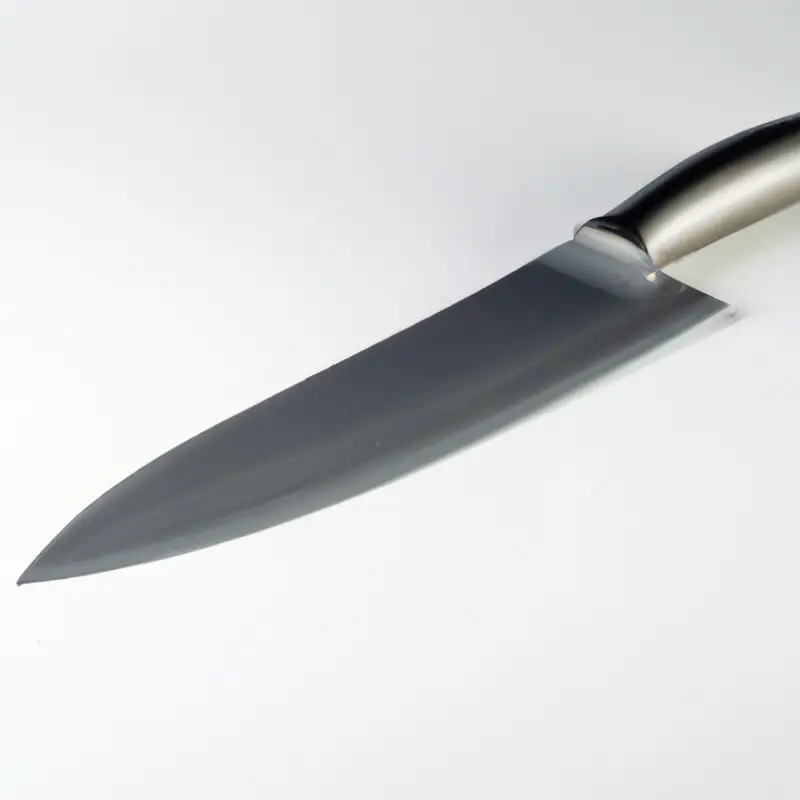
Exploring the Limitless Possibilities of a Santoku Knife in Culinary Creativity
A Santoku knife can open up a world of possibilities in the kitchen by unlocking culinary creativity. Its versatile design allows for precision cutting, making it ideal for a vast range of techniques from julienning vegetables to dicing meat.
With a Santoku knife, a home cook can create restaurant-quality dishes with ease, experimenting with different textures and flavor combinations.
Its unique blade design also makes it perfect for delicate tasks like cutting sushi rolls or finely chopping herbs. A Santoku knife is a must-have tool for any cook looking to elevate their culinary creations and explore new possibilities in the kitchen.
With practice and patience, a home cook can master the Santoku knife and create endless delicious dishes.
Final Verdict
A Santoku knife is a versatile, efficient, and ergonomic tool that can boost your confidence and skill in the kitchen. It’s superior design and efficient performance make it a favorite among home cooks and professional chefs alike.
From chopping and slicing vegetables to preparing sashimi, a Santoku knife can handle diverse kitchen tasks with ease.
By investing in a high-quality, durable Santoku knife and maintaining it properly, you can save time and energy in the kitchen while elevating your culinary creativity and enjoyment.
So, why not add a Santoku knife to your kitchen arsenal and experience the benefits for yourself?

